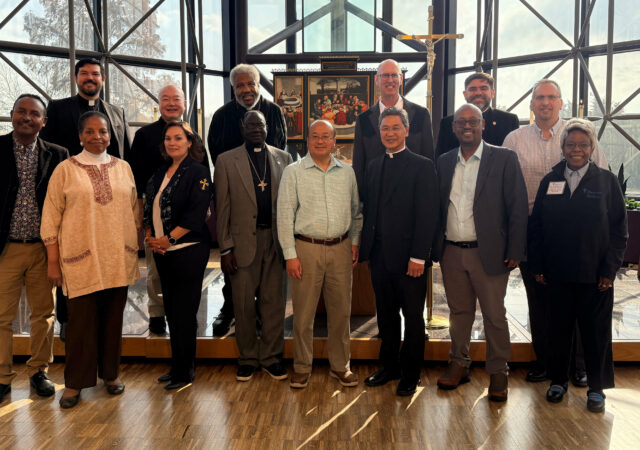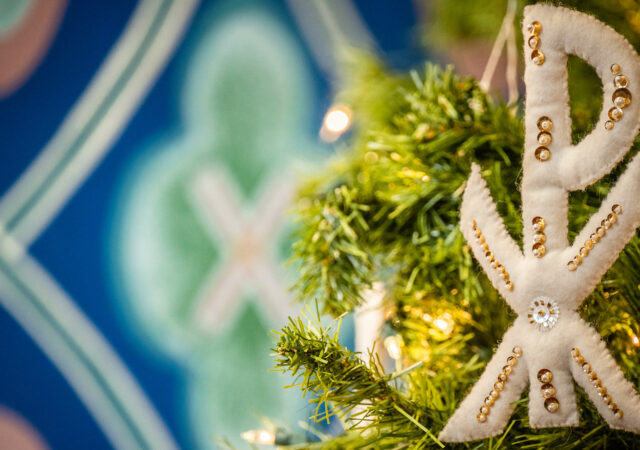(RNS) — Air travelers want to feel safe, and federal security officials want to make sure they actually are safe. If only it were that simple.
Misunderstandings over religious expression have led to recent incidents that prompted apologies from airlines. On March 13, agents with the Transportation Security Administration (TSA) removed a Muslim woman in a headscarf from a Southwest Airlines flight after airline staff deemed her suspicious.
Crew members thought the woman said “It’s a go” into her cell phone, when she actually said, “I have to go” because the plane was about to take off.
That same day, Orthodox Jews triggered a security alert on an Alaska Airlines flight when they strapped on tefillin, or ritual straps for the arms and forehead, and began to pray in a foreign language.
Such incidents highlight an ongoing challenge for airlines and the TSA to allow for religious expression while also taking prudent security measures. The domain puts personnel in the sometimes uncomfortable position of assessing: When does a prayer, a garment, or religious paraphernalia constitute a threat?
“We are sensitive to travelers’ concerns,” TSA spokeswoman Sari Koshetz said, “but security is not optional.”
Muslim and Sikh groups say it’s an ongoing problem — almost always directed against religious minorities — that hasn’t improved much since the 9/11 terrorist attacks prompted widespread security crackdowns.
Muslim women in headscarves and Sikh men in turbans are routinely subjected to extra pat-downs at security checkpoints, advocates say, thus stoking fears among already-tense fellow passengers.
“Imagine you’re walking through the airport and you see this group of people, all fitting this certain profile, who are all pulled aside,” said Ameena Mirza Qazi, deputy executive director of the California chapter of the Council on American-Islamic Relations, a Muslim civil rights group. “It feeds into pervasive biases that people have.”
Even before they clear security, several religious groups chafe at full-body scanners that they consider immodest; the 18-member Fiqh Council of North America last year issued a fatwa (religious edict) that said the scanners violate Islamic law.
TSA takes steps to allow for religious needs, Koshetz explained — allowing travelers to forgo a full-body scan, for example, and instead receive a thorough pat-down by a person of the same gender. Those who wear head coverings or loose-fitting clothing may undergo additional screening, she said, and in some cases need to remove headwear to show “the head area is free of a detectable threat item.” The TSA neither condones nor practices religious profiling, she said.
Some religious minorities have welcomed TSA’s accommodations. Orthodox Jews, for instance, dropped complaints about new screening procedures last year after TSA announced the option of same-gender pat-downs. The Hindu American Foundation likewise has no pending concerns or requests to modify TSA procedures, according to Managing Director Suhag Shukla.
Others, however, feel they’re being unfairly targeted. Sikhs have been working with the TSA for years to craft screening procedures that respect turban wearers, according to Amardeep Singh, program director for the Sikh Coalition. Yet Sikhs continue to endure stigmatizing turban pat-downs, Singh said, even though scanners can purportedly see through fabric.
“We’re still trying to get from [the TSA] the reasons why the turbans require this extra scrutiny,” Singh said. “It sends the wrong message to the other passengers. It singles us out in a way that builds into the discrimination that the community already feels as a result of our religious appearance.”
Some are more concerned with the practices of airlines than the TSA.
The Orthodox Union, which represents Orthodox Jews, is developing initiatives to educate airlines about Jewish observances, including the use of tefillin and prayer shawls. Alaska Airlines is developing new training materials in consultation with the Jewish Federation of Greater Seattle.
“The plane is controlled by a more idiosyncratic sense of what’s going on, and there’s no TSA policy” to heed, said Michael Broyde, project director at the Center for the Study of Law and Religion (CAIR) at Emory University. “There’s a lack of common sense on many sides” on which types of religious expression should be permitted during flight.
CAIR also sees the need for improvement in the wider airline industry. The organization has seen a recent increase in complaints from Muslims and other religious minorities who say they’ve been “ejected from aircrafts for no reason at all,” Qazi said.
The airline industry says staffers often have had training to make them aware of various groups’ religious customs and practices.
“Airlines deeply understand, respect and are very sensitive to their customers and employees who comprise varied cultures and religions and have specialized training for their employees in this regard,” said Victoria Day, spokeswoman for the Air Transport Association.
As policies get fine-tuned, the TSA and airlines say they’re committed to the principle of religious freedom, both in airports and at 30,000 feet. But legal experts caution that claims of religious freedom face limits, and don’t ever trump security considerations.
“There’s no notion in our society that religion entitles you to opt out of reasonable security measures,” Broyde said.
— G. Jeffrey MacDonald
© 2011 Religion News Service. Used with permission.
Posted April 11, 2011




